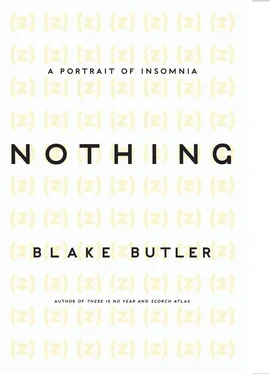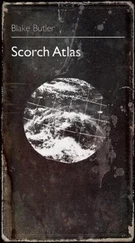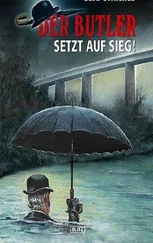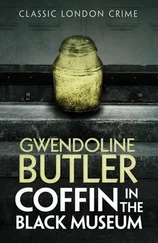Further filmic settings absorb their aura from translated air in unique human space, such as the weird-light-surrounded entity of Poltergeist —beyond its legendary death curse, based in the knowledge that four cast members died within six years of the release. The film was shot in Simi Valley, California, on a Roxbury Street, which was lined with new homes, surrounded by undeveloped land. The houses had no lawns. Location scouts, under the guise of making a B-movie, offered residents free landscaping for their homes in exchange for allowing their premises to appear on film. In certain shots, one can see that the first house on the street — an eerie copy of the home of the film’s central Freeling family, and a house that was unoccupied at the time — has no landscaping, unlike the others. Production wires can be seen running from the lamps of the Freelings’ home. These are small details, burps in the contained air, that again here in context echo in the waking space to some other light — something rattled in the film stock — minor errors connecting from dot to dot the camera accidents and light poles and shadows, stutters — a fabric made of glitch. There is Descartes’ reminder, also, that waking up from a dream can be a part of the dream as well, and thus the discontinuity of waking, and distrust of rationale — never knowing where the body has been really, or where it is going, or the words. When The Shining was translated to be dubbed for foreign broadcast, certain language became changed. The iconic phrase All work and no play makes Jack a dull boy became “No matter how early you get up, you can’t make the sun rise any sooner” (Spanish), “The morning has gold in its mouth” (Italian), “What you have is worth much more than what you’ll have” (French), further iterations on the words crammed into the words already there, the words that inside the film, never change, despite how they are read — each a layer placed into the text inside the image regardless of one’s awareness of it, as the thing itself goes on — the film existing copied in countless surrounding houses, like the Bible, strewing flesh of media between unseen doors. “A photograph is a secret about a secret,” said Diane Arbus, who later killed herself by slitting her wrists and eating pills. “The more it tells you the less you know.”
Twelve years after Poltergeist ’s release, the Freelings’ doppelgänger house drew extensive damage in an earthquake; the garage ripped out of the ground, the driveway cracked, and surrounding walls collapsed. In the Google Maps view of the Poltergeist home (4267 Roxbury), the houses there now look like pyramids, overgrown shapes. Above the house, in the middle of so many massive houses, sits what appears to be a field of yellow sand — a blank space with odd lumps set in it, mounds. The browser will not allow the street view to touch down . All of these houses have a beginning point (their construction) and an end (their eventual dismantling), though the air they contain remains unique space. Bought and sold, hammered and burned, whatever building or hotel or nowhere becomes brought to stand around it, in walls and windows, tunnels, doorways — where — those specific nodes, short of eternal obliteration by some black hole explosion or angry god, will go on— within the hole where the earth was . They will be the meat they are from A to B and B to A, again, again, despite whichever kind of board or nail or glass pane, whoever makes the space their lair — their code names caught for now in glyphs and numbers, our makeshift location signifier, GPS (of latitude, and longitude, and altitude, and precise time) (of space, control, and user). In real estate, stigmatized properties —those altered in air by occurrences or aura-making such as the Poltergeist estate — must in some cases have their status disclosed to potential buyers; this can include both physical and emotional components, for which guidelines vary in negotiation between state lines, though there is so much that could never fit into a contract, could never be teased out of the frame.
“No dreamer ever remains indifferent for long to a picture of a house,” wrote Gaston Bachelard — as in every house is every person, structures like the body in the light, and hiding from each other underneath the houseflesh other bodies, so much nowhere. The wanting wells throughout the hours of the day, the structure of one’s home, and within that, one’s body, remaining under constant fuselage of other’s seeing, wanting, passing in the blank, even, as they see, in driving past the rows of homes in going for groceries, the peripheries projecting, combing through mental mud. Such is the wont of accidental witchcraft. Such is unconscious absorption, radiation, charm, which Bachelard eventually confronts via the body, among sleep: “The repose of sleep refreshes only the body. It rarely sets the soul at rest. The repose of the night does not belong to us. It is not the possession of our being. Sleep opens within us an inn for phantoms. In the morning we must sweep out the shadows.” Those who do not sleep, then, for longer and longer periods, in some informal affront against the dark, forced against the will to reckon with that which would have us be silent, open, in want of exit of the self. This residual, complex motion appealing to the body at such levels that it becomes difficult to speak or walk, shutting down in the face of such looming, of the space around the body beating body. “You don’t try to photograph the reality,” Jack Nicholson said, quoting Kubrick, in an interview years after the director died inside his sleep, “you try to photograph the photograph of the reality,” and somewhere in this, the replication forming its own version of the same — to want and want at and never enter.
Of course there are the countless houses in countless films, their innards reel-to-reel with captured air — homes in the backgrounds, homes in horizons, rooms in videotapes and snuff tapes and webcams — houses replicating their long walls around the air for every minute, on and on into the year; even when the house itself is torn down, its confines set in some way where we will breathe. “There is no trajectory on the screen that does not correspond to its double in reality,”156 and likewise, the double to its next double, on and on. All of these homes and houses must then be somehow connected in their ongoing, the flesh of one home reappeared in a third — the pattern on the floor from the poet’s bedroom in Orpheus —where death comes to stand over him in the night — is licked with the same pattern as the hallways in the apartment building of Eraserhead —both rooms with portals held within them that lead into the realm of death. Tunnels. Time effacement. Negotiating motion for replication in all time, pulled open in small places by the body, as a tool. “The film plays my parts for me,” the actor performing the title role of Orpheus, Jean Marais, is said to have said, as if in performance he had realized he was not the self himself, but was merely walking in the form of what the film, among all film, wished him to be.
“Some houses may have been moved,” writes Ben Marcus, “and may have contained the ancestors of other shelter tribes, others might have resisted sleep migration and collapsed.” Here not only are the sites of all the houses linked, but sites of prior demolition, evacuation, a whir of coordinates in which the self some years might hide. Marcus goes on: “Archaeologists divide the time of this culture into the house maker and the house destroyer periods; in the latter period, participants turned increasingly to nonuseful and abstract houses, eventually constructing the penetrating gevorts box, of which one thousand wooden units were made during the Texas-Ohio sleep collaboration, 1987. Gevortsing has subsequently become known as any act, intention, or technique that uses negative house imagery during the dream experience as a device to instruct inhabitants to sleep-kill or otherwise destroy themselves, their walls, windows, doors, or roofs upon waking, until a chosen version of the culture has been sufficiently driven from their home.” At last, in Marcus’s projected future, in an act of revolt against some seeming ever-present oppressor (which is so ever-present as to infect our dreams, to take on forms they cannot read, but must assume are there), humans at last lash back against the air of other bodies and years accrued around them — via such things as photographs, films, codes, flesh, language, machines — they become aware of where they’ve been (surrounded) and realize their own bodies as unconsciously possessed by what they remember and do not remember, own and do not own — their sleeping minds invoke their expected waking into a want to claim the house for what it should be — ours — no longer plagued with culture’s malfunctional gloss.
Читать дальше












